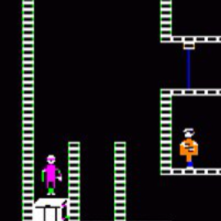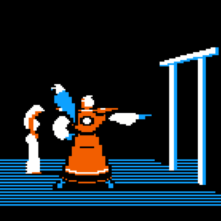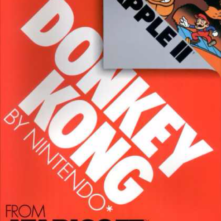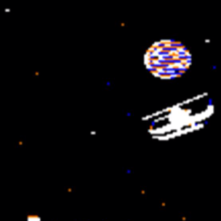MAD Magazine’s Spy vs. Spy
| July 8th, 2019 8:46 AM by Ken Gagne | Filed under Game trail; 1 comment. |
I grew up reading MAD Magazine, having inherited a collection of back issues from my oldest brother. I was sometimes too young to get the humor, but I always enjoyed the comics, especially Spy vs. Spy.
With every new #MAD as a kid I always flipped to Spy vs. Spy first, then Don Martin second, then searching through for all Sergio's marginals and THEN I settled in to the rest of the magazine beginning to end. I wouldn't be the cartoonist I am today without that fine publication. pic.twitter.com/TOT52oJBUn
— Graham Annable 🎨 (@grickle) July 5, 2019
Licensed computer games were rarer in the 1980s than they are now; the technology to produce an authentic adaptation from one medium to another just wasn’t there. But Spy vs. Spy’s simple angles and slapstick antics made for a wonderful two-player Apple II game, packaged in an impressive clamshell case.
My youngest brother and I would wake up early Saturday mornings to compete in this split-screen game. I would always be the white spy as we wandered the embassy, searching for secret documents and setting traps for each other. Like in Space Ship of Death, a BBS door game I later adapted to the Apple II, each trap had a defense: a bucket of acid propped on a door could be protected against with an umbrella. But since we shared a monitor, my brother and I could see where the traps were being set, ruining the element of surprise. If no defense was available, it wasn’t uncommon for one of us to simply stop playing, stubbornly refusing to trigger a trap we knew was there. Still, it was a fun game and one of the few areas of my life where I felt I could sometimes best my sibling.
When the pages of MAD Magazine advertised that a sequel to the game was coming to Commodore 64, I wrote a letter to the editor asking why it wasn’t being released for the Apple II. I actually got a letter back, explaining how it cost money to make a game and they had to be sure they’d make that money back by adapting it to another computer system. I was confused: didn’t they know I would buy it? Wasn’t that enough??
Today, my letter would’ve gotten me added to a marketing email list, with my specific interests indicated as Spy vs. Spy and the Apple II. But back then, this one-time exchange wasn’t enough to warrant MAD following up with the official news, prompting me to organically discover when Spy vs. Spy II: The Island Caper was eventually released for the Apple II:
I didn’t think it possible, but this game was even better than the original. The setting was more exotic, the traps were more ingenious, the gameplay was more intuitive, and the graphics were more distinct. Although my brother and I were getting to the ages where we were too old to play together, we still got in several rounds of this game.
It wasn’t until 2012 that I found out there had been a third game in the series, Spy vs. Spy III: Arctic Antics. Replacing “health” with “body heat” is clever, but the bleak landscape makes me think the series peaked with its second iteration.
A version of the original game was later released for iOS, but it was never updated to be 64-bit; it stopped working with iOS 11 and is no longer available in the App Store. Even when it did work, the touch interface did not lend itself well to the intricate machinations of one spy, let alone two.
The brand was also licensed to a PlayStation 2 / Xbox game, but it has little if anything to do with the original trilogy.
A new game in the series, Spies, is tentatively under development. A lengthy description claims Spies will be inspired by “the original”, though it’s unclear if they’re referring to the Apple II game or the later PS2 title.
The official #SpyvsSpy #remake and #sequel is coming! pic.twitter.com/j77I9anB43
— ONIGAME (@onigame_team) February 6, 2018
Sadly, just as this franchise has struggled in the past decades, so too has its source material. MAD Magazine will cease publication of original content later this year, switching to reprints of classic material with a single annual issue of new content.
I regret the passing of an iconic institution of America’s cultural landscape. But just like the Apple II game was better than the PS2, sometimes revisiting the past is better than trying to recapture it with reimagings. For all the fond memories of sibling rivalry it gave me, I hope MAD Magazine finds success in its new format.















